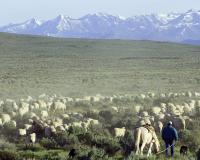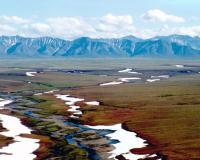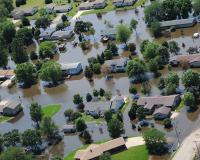
Vibrant Environment
Land Use And Natural Resources
All | Biodiversity | Climate Change and Sustainability | Environmental Justice | Governance and Rule of Law | Land Use and Natural Resources | Oceans and Coasts | Pollution Control

In An Inconvenient Truth, Al Gore famously used the example of a slowly boiled frog as a metaphor for climate change. That turns out not to be accurate, as biologists say the frog is smart enough to jump out of the pot long before it becomes frog soup. But the problem Gore described is real enough.

Federal public lands account for 47% of the American West, and more than 90% of all federal land is found in the 11 westernmost states and Alaska. Between them, the U.S. Forest Service and Bureau of Land Management administer about 34% of the western landscape, including almost 85% of Nevada; more than 50% of Idaho, Oregon, and Utah; and more than 40% of the land in four other western states. The appropriate use, management, and ownership of these lands have been the subject of heated debate since they were first established, and the debate has anything but waned since President Trump took office.

Following President Trump’s announcement that he was reducing the size of the Bears Ears and Grand Staircase-Escalante National Monuments, there have been questions as to the extent of the executive branch’s power to manage federal lands. The announcement has put the Antiquities Act, which grants the president the authority to protect federal lands, under a microscope. Recently, two cases concerning the U.S.

Tropical forest ecosystems are globally recognized for their carbon sequestration capacities. Past research has estimated that tropical forests on average sequester a net 1400 teragrams of carbon per year, the equivalent of taking approximately 1 billion passenger vehicles off the road. International governing bodies, national governments, and nonprofit organizations have attempted to capitalize on the carbon sequestration services provided by tropical forests in an increasingly carbon rich atmosphere. Programs such as REDD+ (Reducing Emissions from Deforestation and forest Degradation + enhancing forest carbon stocks) have resulted in significant expenditures of efforts and resources into developing frameworks for preserving tropical forests.

The 1906 Antiquities Act grants presidents the authority to protect historic landmarks, historic and prehistoric structures, and other objects of historic or scientific interest. Yet, last April, more than a century after the passage of the Antiquities Act and more than 50 years since the last alteration of national monument boundaries, President Donald Trump issued an Executive Order instructing Secretary of the Interior Ryan Zinke to undertake a broad review of national monuments created since 1996 under the Antiquities Act and that span at least 100,000 acres. On December 4, 2017, acting on Secretary Zinke’s recommendations, President Trump issued two proclamations significantly reducing the acreage and perimeters of Grand Staircase-Escalante and Bears Ears National Monuments.

Some say leftovers are the best part of Thanksgiving. While that may be true, the rest of the year, there are ample missed opportunities to donate surplus prepared foods from institutions and restaurants. Realizing these opportunities is an important way to waste less food and feed more people, because up to 40% of food (along with the water, energy, and land used in production) goes to waste every year in the United States. At the same time, over 13% of Americans—one in eight—experience food insecurity.

Houston’s 160-acre Buffalo Bayou Park was designed to flood. The park is lined with native vegetation and landscaped to channel runoff and maximize floodwater transport capacity. Dog-walkers, joggers, bikers, and picnickers frequent the park, which also serves as habitat for native plant and animal species and has features that help filter pollutants from stormwater runoff that would otherwise flow directly into the waterway.

Many of the provisions in the tax legislation being considered by Congress this month (H.R. 1 “The Tax Cuts and Jobs Act” and related Senate legislation) as part of the Budget Reconciliation process are getting substantial attention: the reduction in corporate tax rates, elimination of the estate tax, consolidation of individual income tax brackets, elimination of medical and state and local tax deductions, and modification of the mortgage interest deduction. However, one key matter in the package is only now beginning to receive notable public attention: the long and hard-fought legislation to open the Coastal Plain of the Arctic National Wildlife Refuge (Arctic Refuge) to oil and gas leasing and development.

Floodplain acquisitions offer many benefits. As Dr. Rebecca Kihslinger explained in a previous post, buyout properties can be transformed from flood-prone subdivisions and vulnerable riverfront businesses into community gardens, biking trails, and natural habitats. And by acquiring flood-prone properties, local governments can spare families and business owners the heartbreak that accompanies seeing one’s home or livelihood submerged.

On May 30, 2017, in two separate opinions, a Montana district court overturned a U.S. Forest Service approval of a mine proposal submitted by Hecla Mining Company. In the first case, the court held that the approval violated the Clean Water Act (CWA), National Environmental Policy Act (NEPA), and National Forest Management Act (NFMA).